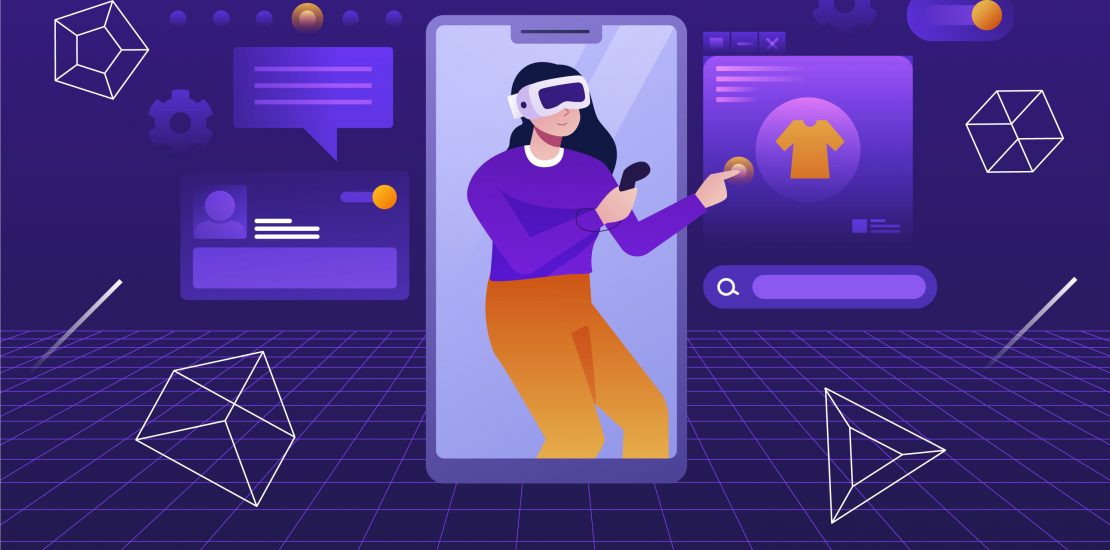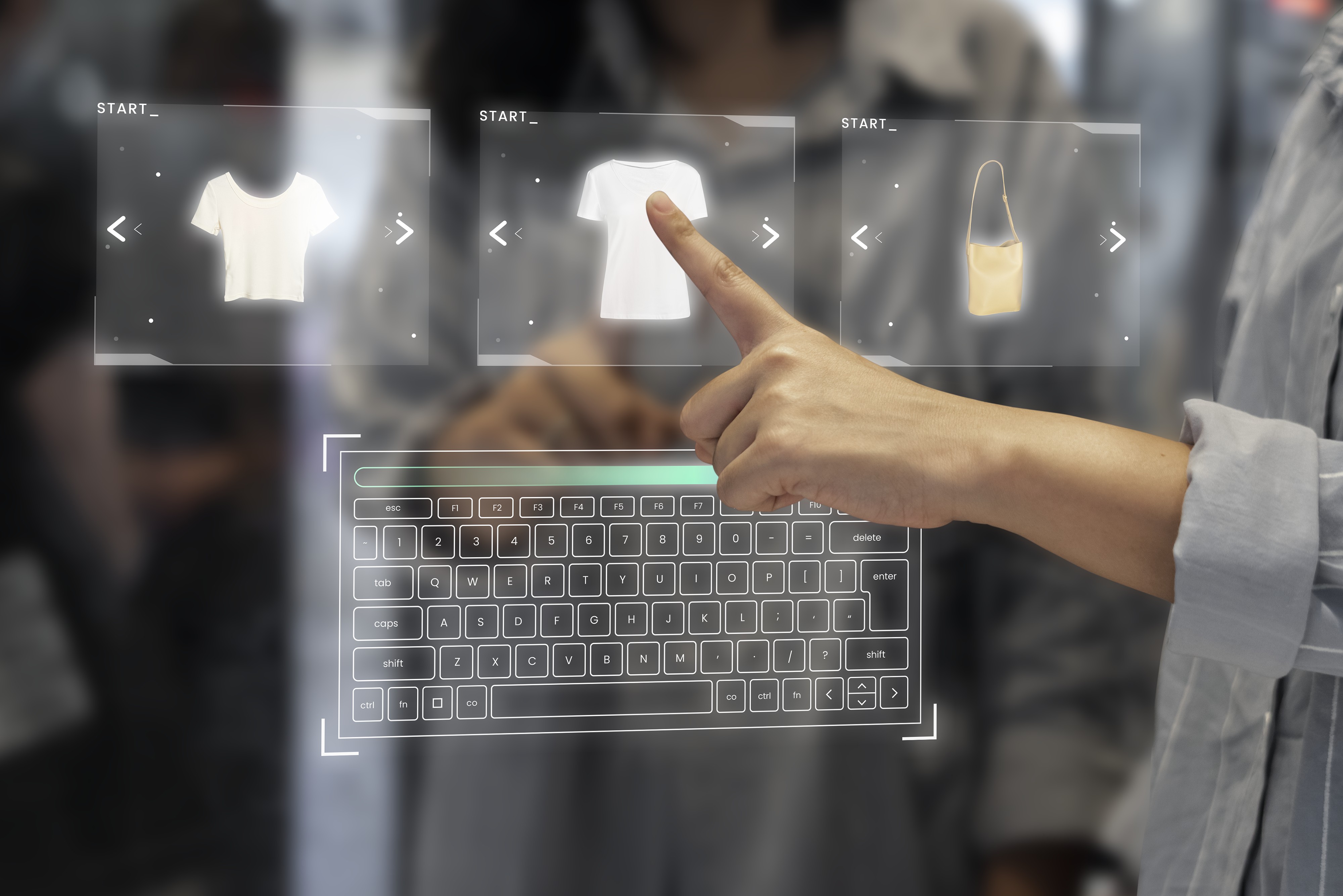An Overview
Going back to 1992, when it was first mentioned in Neal Stephenson’s novel and became popular in a few years, especially across gaming platforms, the term Metaverse is no longer a new concept. It has rapidly expanded its wings to become an emerging platform for consumer trade and many other applications in various industries. The retail and CPG industry is no exception to this.
The arrival of the internet made consumer, and retail brands build their websites, adopt e-commerce, enter social media, live broadcasting, and several other gimmicks. Metaverse offers these brands a new concept to experiment with and build customer engagement and loyalty. Consumers are getting accustomed to online shopping and gradually using immersive, interactive, and real-time content in their shopping experience. A new branch of commerce – eCommerce (Immersive Commerce) is becoming our next reality.
Businesses are changing their strategies to get the most advantage out of this new opportunity and monetise as much as possible. According to the statistics provided by Pure Web, 63% of consumers say they would share more information with brands offering a great customer experience. Brands can also demand up to 16% price premium on products and services with a great customer experience.
How is the retail and CPG industry innovating with Metaverse?
Combination of gaming and shopping (Gamified Commerce)
Metaverse has its biggest foot in the gaming field with billions of users. Having realised this potential market niche, the brands are teaming up with these gaming platforms to showcase and sell their products. The following are some examples of this strategy adopted by many brands.
- Gucci partnered with a platform named Roblox and introduced virtual Gucci Garden, showcasing a virtual version of its products. Twenty million users visited this virtual garden. The products grabbed their attention, and the brand earned more money on these virtual versions than their physical equivalents.
- Burberry launched their game named Honor of King. The digital avatars in the game wore the brand’s outfits. Any fan interested in any of the outfits from the game can go online to purchase them and in any Burberry stores near them.
- Louis Vuitton introduced ‘Louis the Game’, a video game that combines heritage, innovation and NFT art to attract and maintain customers to their fashion world.
- Unlike the fashion world, Sentosa Development Corporation recreated Sentosa Island in-game called ‘Animal Crossing’ in the early months of the pandemic. It invited players to visit its attractions and do virtual yoga “while cooped up at home”.
- In the same game, food delivery service Deliveroo sent a fleet of virtual riders to deliver virtual treats to players. Paired with it were promo codes to order food in the real world.
Hence, businesses are developing more innovative ideas to make their presence in the Metaverse through gamification. This is expected to only increase in the coming future.
Marketing reinvented
Apart from selling the products, Metaverse has opened plenty of ways for the brands to promote their products, which results in increased customer engagement and brand loyalty. It also opens additional markets and a new customer base to target and enter. The most popular and effective examples of this are Wendy’s and Coca-Cola.
- During a food fight in Fortnite 2018, Wendy’s created a digital avatar resembling its mascot and destroyed all the freezers with beef. This way, they advertised their ‘no frozen beef’ policy. This innovative idea grabbed the attention of millions of people, and the brand mention across social media grew by 119%.
- In July 2021, coca-cola launched its NFT collection on the Open Sea platform and raised more than five hundred thousand dollars in the virtual auction. They also awarded their NFT collectables through a game, promoting their ideas of friendship to the winners. The winners were also given a freezer full of Coca-Cola and another collectable in real life. It is a perfect attempt to promote the brand’s values.
FMCG brands do not find much presence in gaming platforms and metaverses. This fact has not held them back, however. These brands have come up with ideas for purpose-oriented integrations, and they launch their retail campaigns virtually.
- Venus, a women’s razor brand by Procter and Gamble, created “more realistic” skin types for avatars in the game named Animal Crossing, featuring freckles, acne, cellulite, stretch marks and psoriasis as part of its ‘My Skin, My Way’ campaign.
- Hellmann’s, a mayonnaise brand of Unilever, created a branded island in Animal Crossing. It invited players to drop off their spoiled turnips for a real-world donation to Canadian food rescue charity Second Harvest. It formed part of the brand’s strategy that ‘food is too good to be wasted’.
Hence, such creative branding of products and values of the business is integrated with gaming in Metaverse, giving a uniquely immersive experience that enables prolonged customer engagement with the brands. Marketing is no longer a business as usual now.
New Retail model – merging physical with virtual.
Metaverse is gradually changing the business models of the retail and consumer industry by merging physical and digital versions of stores and campaigns. This so-called ‘Phyigtal World’ concept is exactly what the future of retail will look like. Many brands are already experimenting in this arena. Below are a couple of examples:
- Balenciaga, a fashion house, partnered with Epic Games and launched its autumn/winter 2021 collection in virtual reality. Brands like Ralph Lauren and Stella McCartney also launched and sold their outfit collections virtually in the same fashion.
- Nike created user-driven, fully immersive digital experiences to display its sneakers in AR. It acquired a company named RTFCT that creates virtual sneakers and collectables for Metaverse. It also plans to enter the Metaverse and sell digital versions of its branded sneakers apparel in various Metaverse spaces by filing patents for virtual goods and building virtual retail environments (such as virtual stores) to sell those goods.
Almost every product marketed to humans can be sold in Metaverse. This new retail model is limited to launching and selling products online in the virtual space. There are many other facets of this new retail model.
- Direct-to-avatar (D2A) is becoming the new retail strategy.
- Offline to online activation means purchasing an item offline will activate the virtual version of the same thing for the person’s digital avatar upon scanning a code. This is a new way to attract many new online and offline customers.
- The brands may launch new collections fully virtually first to test the popularity and response among the targeted audience. It can also be a guiding point while deciding what and how much to manufacture physically and sell.
Others
Although less common in retail and consumer goods, businesses adopt several other ideas to design unique, interactive, and immersive experiences to increase customer engagement. These attempts include social gaming and product partnerships, customisations, Mass Interactive Live Events (MILEs) such as music concerts, virtual exhibitions and many more. The retail and consumer brands will also adopt these strategies to reap the best benefits.
Market Drivers
The data suggest –
The integration of Metaverse into a wide array of industries is our present and future reality. According to some statistics, over 40 million people are estimated to move through Metaverse every month. According to a study by Snap and Deloitte, by 2025, nearly 75% of the global population and nearly all people who use social apps will be frequent augmented reality users. Bloomberg estimates the Metaverse will be valued at $800 billion by 2024. All these suggest that Metaverse is only going uphill in the coming years.
The amalgamation of technologies presents a new platform –
Having started from the gaming world, the Metaverse has brought together various technologies such as VT/AR, smart contracts, blockchains, and ownership rights to digital assets authenticated and protected by Non-Fungible Tokens (NFTs). It has culminated into a new creative platform for any business to provide customers with a unique immersive shopping experience. For example, NVIDIA is creating its Omniverse Platform as a place for any company or designer to work on 3D workflows for the metaverses. With such aids and constraints related to physical stores (such as restrictions on designing because of physics) removed, the retail industry can redefine marketing, engagement and shopping experience.
IP Protection –
Everything in the virtual world is hackable. It isn’t easy to ensure the security and authenticity of a digital asset. This major problem gets resolved with the concept of NFTs. These Non-Fungible Tokens protect Intellectual property. Hence, the Metaverse becomes a more secure place to conduct business in.
Market Challenges
With the numerous possibilities that the Metaverse offers, it poses certain challenges for any retail or CPG business. Below are some of the key challenges:
Creativity is a must –
Creativity becomes a major determining factor for success when all the businesses are given similar grounds to lure customers in and establish their brand. Each retailer must innovate new ways to increase brand loyalty and engagement. They will need to tap into the growth from the most by looking into their existing and potential audience base.
All virtual cannot be real –
In the retail and CPG industry, virtual stores and immersive experiences of metaverses cannot suffice the need for physical items. The customers will still need their food, clothes, and other consumer items in the real world. Hence, a hybrid solution combining physical and digital versions is necessary. Possible solutions could be converting digital reward points in physical stores or availing digital versions of the same item upon purchasing its physical version and vice versa. Retail brands and CPG businesses will need to find more innovative ways. Only then will they be able to get on the long-term utility path rather than just short-term profits?
Upgrading of Skills –
With technology evolving rapidly, every business needs to upgrade skills simultaneously. Apart from being skilled in AR/VR and animation, proficiency in managing a secure technological setup that cyberspace hackers cannot harm will also become a prerequisite. Every business must arm itself with skilled teams to reach the desired heights.
Is this the right time to enter?
Any innovation starts at an experimental stage and becomes widely adopted gradually over time. The internet took almost ten years to become a primary requirement for most brands from a mere experiment. With more innovation and knowledge, the period will shorten in the case of Metaverse. The retail industry has already stepped into the Metaverse and tasted the benefits. It will just be a matter of time before it becomes widely adopted. With millions of people logging into Metaverse daily, the next generation of eCommerce is emerging.
With brands like Facebook (now meta), Amazon, Microsoft, and NVIDIA investing millions of dollars, the metaverse project shows promising returns. Soon, mass-market consumer brands may see the online gaming market as a niche and enter the field, increasing competition in the market. Hence, following the example of eCommerce, those who are first to enter and explore will stand to benefit the most.
Maury Rogow, CEO of Hollywood’s Rip Media Group, notes that retail will be one of the largest sectors in the Metaverse. The Metaverse presents retail businesses with additional markets to pursue. Virtual stores, immersive and interactive events, dressing rooms, and virtual showrooms can potentially be mass adopted. With several brands experimenting with these possibilities, the retail industry is evolving rapidly. Those ready to give customers a truly omnichannel shopping experience will emerge victorious.






